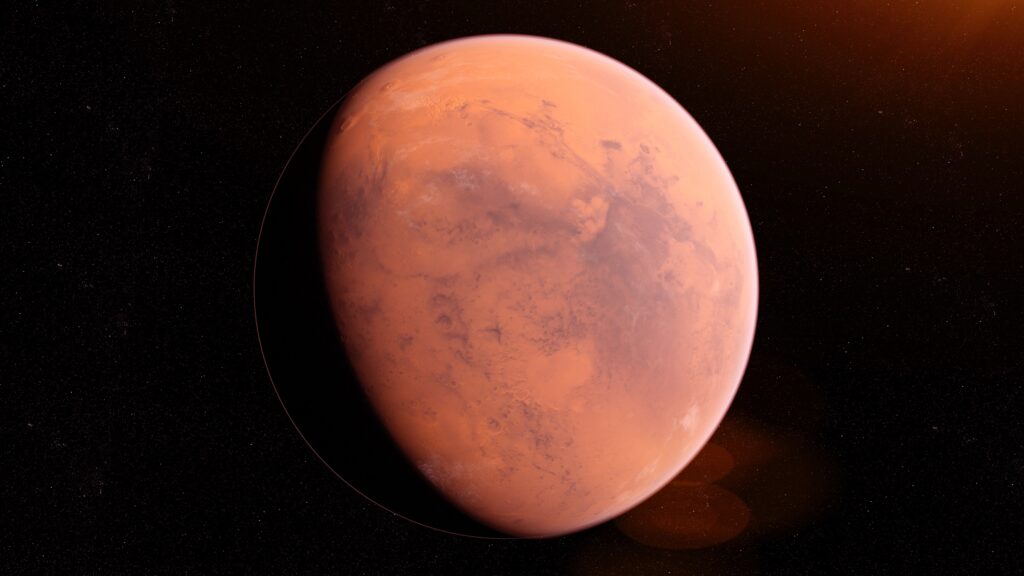Observe Mars During Its 2023 Opposition
Astrophotography enthusiasts and casual stargazers alike should mark their calendars for an exciting cosmic event this week: the opposition of Mars. This phenomenon occurs when Earth is positioned directly between the Sun and Mars, bringing the Red Planet significantly closer at about 60 million miles away—around 42% nearer than its average distance from our planet. This rare event offers some of the best viewing experiences of Mars in recent years, with its peak brightness expected to occur on the evening of January 15.
Astronomers refer to this occurrence as “opposition,” which is a term used to describe when a planet is closest to Earth while being illuminated by the Sun’s rays. The result is a striking view of Mars in the night sky, making it appear more radiant and larger than usual. Observing this magnificent celestial body will be particularly rewarding this week, and enthusiasts are encouraged to take advantage of these ideal viewing conditions before the next opposition arrives in 2027.
For those keen to witness the Red Planet in its full glory, the best nights to look for Mars will be from January 13 through January 16. Although Mars will officially reach opposition on January 15, early sightings will already reveal the planet’s captivating brightness. Stargazers can anticipate a stunning display in the lead-up to this event, with Mars becoming increasingly visible against the backdrop of twinkling stars. Whether you venture out on the night of the 15th or earlier, you’re likely to be captivated by what you see.
Residents across North America will be treated to an additional spectacle on January 13: a lunar occultation, where the full Wolf Moon will pass in front of Mars, providing viewers with a thrilling visual experience. Scheduled to begin at approximately 8:45 PM EST, this event will be visible to most areas and presents a unique opportunity for photographers and astronomy enthusiasts to capture Mars visually interacting with the Moon. Before heading outside, remember that clear skies will enhance visibility.
Finding Mars in the night sky is straightforward. The planet will rise in the eastern horizon at dusk, peaking around midnight, making it high in the sky for optimal viewing. Positioned in the constellation Gemini, Mars’ characteristic tangerine glow will become more vibrant as it approaches opposition. Even urban dwellers in light-polluted cities will be able to see the Red Planet, demonstrating its brilliance amid the surrounding stars.
For those seeking an enhanced experience, using binoculars or a telescope can reveal fascinating details on Mars’ surface, including the planet’s vast canyon systems and the imposing Olympus Mons volcano. If you’re new to planet-watching, consider downloading a stargazing app to help locate Mars and navigate the night sky effortlessly. Many educational resources online offer insights about astrophotography, perfect for anyone eager to expand their cosmic knowledge.
Finally, consider joining community astronomy events during Mars’s opposition week for a more immersive experience. Several organizations across the United States will hold events specifically focused on viewing Mars. From the Chester astronomy event in Pennsylvania to the star parties at notable observatories like the McDonald Observatory in Texas, these gatherings provide excellent opportunities to learn from knowledgeable guides and share the excitement of stargazing with fellow enthusiasts. Be sure to check local listings and reach out to your local astronomy club for further opportunities!
As a significant moment in astronomical events, Mars’s opposition provides an opportunity for education, exploration, and excitement. Don’t miss your chance to witness this beautiful phenomenon and enjoy a night under the stars!
For more information on celestial events, visit NASA or subscribe to online astronomy forums where enthusiasts share their experiences and tips on observing the night sky.
